- Home
- Deborah Harkness
The World of All Souls Page 11
The World of All Souls Read online
Page 11
Diana was quite right to be terrified of this kindly-looking old man when he visited her at the Hart and Crown, for the “Old Fox” William Cecil was not a person to be trifled with. But then neither was Diana Bishop.
GILLIAN CHAMBERLAIN
Origin of name: Chamberlain is a name of Old French origin. It is an occupational name for the official in charge of the private chambers of his master.
Date of birth: 1970s
Physical description: In her thirties, and slightly owlish in appearance
A member of: The Oxford coven
Family and romantic relationships: Gillian’s mother, Susan Chamberlain, was romantically involved with Emily Mather before getting married to Gillian’s father, Richard Stevenson.
Personal history: Gillian was a witch driven to succeed at any price. She was a scholar of classical languages and ancient religion, but her ultimate ambition was to occupy a seat on the Congregation. She studied the career of Peter Knox and admired his rise to prominence despite his less-than-distinguished magical lineage. He was her role model as well as her rival, and she eagerly seized the opportunity to help him spy on Diana Bishop.
In her efforts to please the Congregation and to ally herself with other witches, Gillian adopted a chirpy, “sisterhood is everything” attitude that tended to ring false with fellow witches. She tried too hard. Like Knox, Gillian believed that witches deserved a higher position in the creature food chain than they were currently accorded, and she was especially eager to see vampires put in their place. Gillian coveted a place on the Congregation council so that she could subvert its purpose and work toward witch supremacy.
Families like the Bishops and Proctors were intensely annoying to Gillian. Though she was a conservative and valued witch traditions, Gillian didn’t like the way that witches aggrandized the old bloodlines. In particular she resented the attention that Diana Bishop received, especially since Diana had no discernible talent or ability. Gillian felt she could run rings around Diana and secretly gloated that Diana lacked magical power. To her this was proof that the goddess knew best and rewarded witches who tried hard.
Gillian’s rigid views made her a dangerous adversary. She would be the first to sign up for any program that espoused racial purity and the subjugation of “lesser” creatures. Her death in Oxford, made to look like a suicide by Matthew Clairmont, brought all those threatening ambitions to a close.
ANDRÉ CHAMPIER
André Champier was a printer and wizard from Lyon whom Philippe de Clermont summoned to Sept-Tours to examine Diana. He was also cousin to the famous sixteenth-century Lyonnais physician Symphorien Champier. He was a university-educated wizard and disdainful of the traditional arts and witchcraft known to women. When his painful probings went too far in his attempt to steal Diana’s memories and report back to the Congregation, she acted quickly and killed him with a knife from Philippe’s boot.
JOHN CHANDLER
Origin of name: Chandler is an old Middle English occupational name, meaning maker and seller of candles.
Date of birth: Mid-sixteenth century
Physical description: The man Diana met walked with a stoop and had hazel eyes.
A member of: The Worshipful Company of Grocers
Personal history: John Chandler was an apothecary with a shop under the Barbican Cross, just outside the city walls in sixteenth-century London, and the first witch Diana met in London. His shop was full of grisly oddities, including a well-thumbed pamphlet about German vampire Peter Stubbe, and ink made from hawk’s blood. Chandler, a witch with the gift of silent speech, refused to help Diana find any other witches. Even though he was a witch like her, his allegiances lay with other creatures, including the vampire Father Andrew Hubbard.
On a lighter note, it was Chandler who sold Diana a pamphlet with detailed plans for building “sundrie Engines and trappes to take Polcats, Buzzards, rates, mice and all other kindes of Vermin and beasts,” which she purchased out of concern over the nocturnal inhabitants of their house in the Blackfriars. Diana brought this pamphlet to the goldsmith Monsieur Vallin, inspiring him to construct a magnificent silver-gilt mousetrap for the princely sum of fifteen pounds.
GEORGE CHAPMAN
Origin of name: Chapman is an Old English occupational name linked to a man of trade or merchant.
Date of birth: 1559
Physical description: An ordinary, warmblooded human. When Diana met him, he appeared middle-aged and tired, as though life had already worn him out.
A member of: The School of Night, the Admiral’s Men
Family and romantic relationships: The second son of Thomas Chapman and his wife, Joan. There is no record of Chapman’s ever marrying.
Personal history: George Chapman was a scholar, translator, playwright, and poet of Elizabethan England. His work and style influenced both his contemporaries and poets who came after him. William Ponsonby, who had an eye for writers of great literary merit, recognized Chapman’s skill and published his work. For many years Chapman also wrote popular plays, which were performed in London’s Rose Theatre and the Blackfriars. Unfortunately, his books and plays provided very little income, and Chapman struggled for his entire life to find patrons and sponsors willing to fund his artistic endeavors.
Chapman was often penniless but never friendless. A rather formal and slightly pompous member of the group of intellectual rebels known as the School of Night, Chapman was neither as swashbuckling as Sir Walter Raleigh nor as talented as Christopher Marlowe, nor as wealthy as Henry Percy, Earl of Northumberland. He was, however, an earnest and devoted friend. It was George who took Diana under his wing and did his best to guide her through the rocky shoals of Elizabethan culture. He also searched tirelessly for her mysterious book, finally discovering that it belonged to John Dee.
The majority of Chapman’s literary efforts were published in the years after Diana’s visit to sixteenth-century London. While the School of Night suffered losses in those years, including Kit Marlowe’s death in 1593, the group and its members had a powerful effect on Chapman’s art. In 1594 Chapman memorialized the intellectual inspiration of the School of Night in his poem The Shadow of Night, which he dedicated to his “most dear and worthy friend, Matthew Roydon.” He wrote a poem about the adventures of Sir Walter Raleigh and completed Kit’s unfinished poem Hero and Leander following Marlowe’s death. Chapman also managed to complete his monumental translation of the Iliad, which was admired and widely read by his contemporaries. Unfortunately, this, too, earned him very little money as his sponsor for the effort, Henry, Prince of Wales, died before Chapman could be paid.
See also: LITERATURE: The Shadow of Night
AMIRA CHAVAN
Amira, tall, with short, jet-black hair and skin the color of coffee with cream, is a friend of Matthew’s and an expert yoga teacher. Matthew lets her use the Old Lodge to hold integrated creature yoga classes. Her empathy is a large part of her magic. She is godmother to Philip Bishop-Clairmont.
CHEF
Chef (no one knows his real name) was head of the kitchens in the full and busy household at Sept-Tours in the sixteenth century. He had a large number of creatures under his command and produced lavish meals for family gatherings and feast days. He was thin as a reed and not tall, with his bulk concentrated in his forearms (useful when he’s hefting and working enormous lumps of dough).
BALDWIN DE CLERMONT
Full name and other names: Lucius Sigéric Benoit Christophe Baldwin de Clermont, Baldwin Montclair
Origin of name: Baldwin has Anglo-Saxon and Old German origins, meaning “bold friend.”
Date of birth: c. 82 B.C., in the month of August
Astrological birth sign: Leo
Date of rebirth: September 52 B.C.
Astrological rebirth sign: Virgo
Physical description: Baldwin is a large, burly vampire. He appear
s to be in his late twenties or early thirties. He has ginger hair, an implacable expression, and a quiet command of authority. When Baldwin enters a room, everybody else sits up straighter.
A member of: The Congregation, the Knights of Lazarus
Family and romantic relationships: Full-blooded son of Philippe de Clermont and head of the de Clermont family. His blood brothers include Hugh and Godfrey de Clermont, and Matthew is his stepbrother. He is fond of women but does not have a life mate, only a large number of ex-girlfriends.
Personal history: Baldwin Montclair, the name by which he is known in the financial markets, is Philippe de Clermont’s only surviving full-blooded son and the heir to his legacy. As head of the de Clermont clan since Philippe’s death, Baldwin rules the family with an iron fist. He is a master strategist, often knows more than others think he does, and operates more subtly than he is given credit for. A formidable enemy, Baldwin is always operating on two levels: openly as a warrior and a prince and covertly as a savvy politician. In some ways he is very similar to his father, Philippe: handsome, loves war, loves the company of women and is not afraid of their power. Baldwin is not as charming as Philippe was, however, and is often compared unfavorably with his sire. Baldwin’s relationships with his sisters and with Ysabeau’s children are tense and competitive.
Baldwin’s relationship with Matthew is especially difficult as the two men are very different in temperament. Baldwin is impatient with Matthew’s intellectual side and wishes he would just give up his scientific work and be the lethal killer that is so useful to have in the family. He openly disapproves of Matthew’s taste in friends, especially his stepbrother’s propensity to befriend daemons and share family secrets with them. And Baldwin definitely doesn’t like Matthew’s relationship with Diana Bishop—though, oddly, Baldwin does not disapprove of the witch herself.
Baldwin was originally born in the Roman Empire and became a soldier in the vast Roman army. His skills as a soldier brought him to the attention of Philippe de Clermont, who recruited him into his clan and made him a vampire. Baldwin grew tired of fighting and discovered that empires could rise and fall according to their cash flow. From that point on, he preferred to fight with money rather than traditional weapons and has played a role in the establishment and breakup of every national power in the world ever since.
GODFREY DE CLERMONT
Origin of name: From the Old French Godefroy, with the first element meaning “god” or “good,” and fred meaning “peace.”
Date of birth: Unknown
Date of rebirth: Unknown
A member of: The Knights of Lazarus
Family and romantic relationships: Godfrey was the third full-blooded son of Philippe de Clermont and stepbrother to Matthew.
Personal history: Godfrey de Clermont was known for his devious intellect and sharp legal mind. Hamish studied Godfrey’s notes on vampire law when looking for information on blood vows. His intellectual interests also covered alchemy, and his beautifully illustrated copy of Aurora Consurgens lured Diana to Sept-Tours. Sadly Godfrey was killed in battle, fighting in 1668 in one of the French king Louis XIV’s wars.
HUGH DE CLERMONT
Origin of name: Hugh is the English variant of Hugo and was a name particularly popular in the Middle Ages with the Frankish nobility.
Date of birth: Unknown
Date of rebirth: Unknown
A member of: The Knights Templar, the Knights of Lazarus
Family and romantic relationships: Hugh was Philippe de Clermont’s eldest full-blooded son and stepbrother to Matthew. He was also blood sire to Gallowglass. Hugh’s mate was Fernando Gonçalves.
Personal history: As Philippe’s eldest son, Hugh de Clermont was a key member of the de Clermont family for centuries. He was executed by the French king in 1314. Matthew idolized his older stepbrother and created a shrine to Hugh in the chapel of Sept-Tours, consisting of Hugh’s shield, gauntlets, hauberk, and coat of plates, sword, and helm. (There was no body to bury as Hugh was burned at the stake.) Gallowglass and Matthew exacted revenge against the men who betrayed Hugh.
Fernando and Hugh met sometime in the eighth century and were happy together for six centuries before Hugh’s tragic end. Hugh was a literary, intelligent, and honorable man, but with little practical sense. Fernando was the one who always saw to it that Hugh had what he needed, and their house was well run. When Philippe’s interference in Hugh’s life became too much, he often struck out on his own with Fernando, living in Córdoba, Spain. Gallowglass referred to their separate family as a scion of the de Clermonts. Their home in Córdoba was also a haven for Matthew until Philippe called him away to the Crusades.
LOUISA DE CLERMONT
Origin of name: Louisa is the feminine version of Louis, meaning “famed warrior.”
Date of birth: Unknown
Date of rebirth: Unknown
Physical description: Louisa was preternaturally beautiful, with enormous dark eyes, fair skin, and dark hair. Shapely and seductive, she could attract human prey like no other vampire. Her likeness can be seen in the Peter Lely Portrait of a Lady.
Family and romantic relationships: One of Ysabeau de Clermont’s brood. Her vampire brothers included her birth twin, Louis, as well as Matthew de Clermont. She made many romantic conquests in her dramatic life and caused mischief with other troublemakers such as daemon Christopher Marlowe and vampire Domenico Michele.
Personal history: This vampire was nothing but trouble from the moment she was made. Louisa was one of a set of twins whom Ysabeau plucked out of poverty and a life of crime in medieval Paris and transformed into vampires, against her husband’s advice and the family’s wishes. The male, Louis, made a perfectly acceptable vampire. Louisa was not so lucky. She inherited blood rage and embarked on a career of violence, lust, and love affairs that often threatened to bring the crowned heads of Europe, and the de Clermonts, to ruin.
Louisa’s beauty and allure meant that human men—and women—fell at her feet and offered themselves up for the taking. And take Louisa did. She had no scruples, zero capacity for guilt, and she felt regret for her actions only when she was caught and punished. Philippe finally banished her from the de Clermont clan in 1591 in retribution for her attack on Diana Bishop, which violated Philippe’s blood vow (circumstances kept secret from the wider family). Louisa came to a bad end in the late seventeenth century on a plantation in the West Indies, where her tendency to snack on the sons of local landowners became problematic. She was burned alive in her home, and her slaves were blamed for it.
MATTHEW DE CLERMONT
Full name and other names: Matthew Gabriel Philippe Bertrand Sébastien de Clermont, Matthew Clairmont, Matthew Roydon, Shadow, Sebastian St. Clair, Gabriel ben Ariel, Matthew Chiaromonte
Origin of name: St. Matthew was one of the twelve apostles, and the name Matthew became popular in Europe in the Middle Ages as Christianity took hold. Philippe thought it sensible for Matthew to keep this name when he was reborn, as a link to the new religion that now shaped their lives.
Date of birth: A.D. November 2, 500
Astrological birth sign: Scorpio
Date of rebirth: A.D. June 15, 537
Astrological rebirth sign: Gemini
Physical description: Matthew is physically striking, with blue-black hair, gray eyes that tend to green, and a wide mouth. He is very tall—six-two or six-three—and physically imposing without looking muscle-bound. He is gracefully put together with everything in proportion, which can make him look smaller than he actually is.
A member of: The Knights of Lazarus, All Souls College, Oxford University, the Congregation (at one time), the School of Night University, the Conventicle
Family and romantic relationships: Matthew’s birth parents were a French village carpenter and his wife. He is blood son of Ysabeau and stepson to Philippe de Clermont, lover and husband o
f witch Diana Bishop, and father to Bright Born twins Rebecca and Philip Bishop-Clairmont. His vampire sons include Marcus Whitmore and Benjamin Fox (whom he renounced). He adopted Jack Blackfriars with Diana and became his great-grandsire through Benjamin and Father Hubbard.
His previous romantic relationships, with Juliette Durand and Eleanor St. Leger, ended badly. His first wife, Blanca, died of plague, along with their son, Lucas.
Personal history: Matthew Clairmont is a complex knot of contradictory impulses and desires. At the core he is a sinner in search of redemption. The defining event of his life was not the moment he became a vampire; it was the moment that directly preceded it, when despair and guilt over the sudden deaths of his wife and son led him to take his own life. From that time on, Matthew has been plagued not only with guilt and despair but with rage and fear as well. He fears himself, and rightly so, for he has inherited a curse from his maker, Ysabeau: blood rage, the blind urge to kill. Over the centuries Matthew has learned to control it through self-discipline, his Christian faith, and above all from the exercise of his keen mind. A poet, a healer, a scientist, a spy, a warrior, a prince, and an assassin—all these titles have belonged to Matthew over the course of his long life.

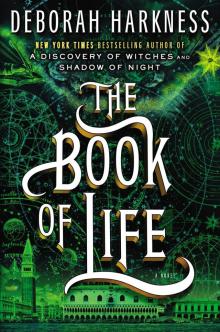 The Book of Life
The Book of Life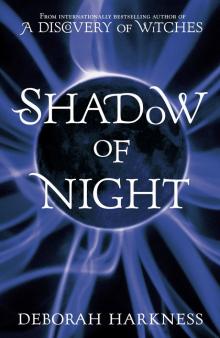 Shadow of Night
Shadow of Night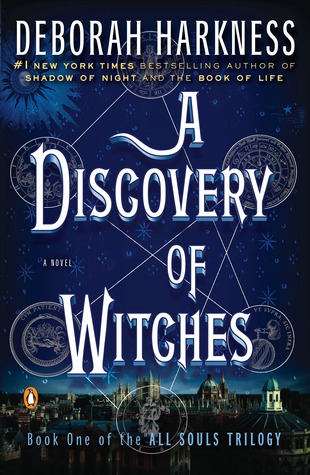 A Discovery of Witches
A Discovery of Witches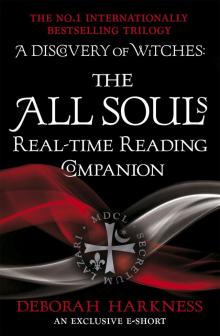 The All Souls Real-Time Reading Companion
The All Souls Real-Time Reading Companion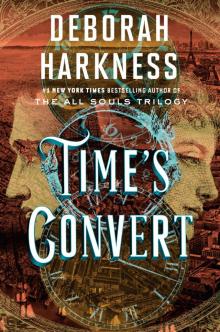 Time's Convert
Time's Convert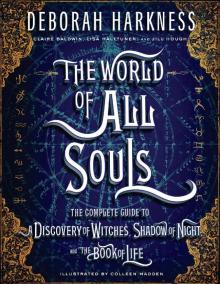 The World of All Souls
The World of All Souls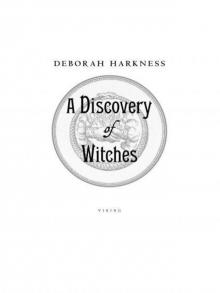 A Discovery of Witches: A Novel (All Souls Trilogy)
A Discovery of Witches: A Novel (All Souls Trilogy) Shadow of Night: A Novel
Shadow of Night: A Novel